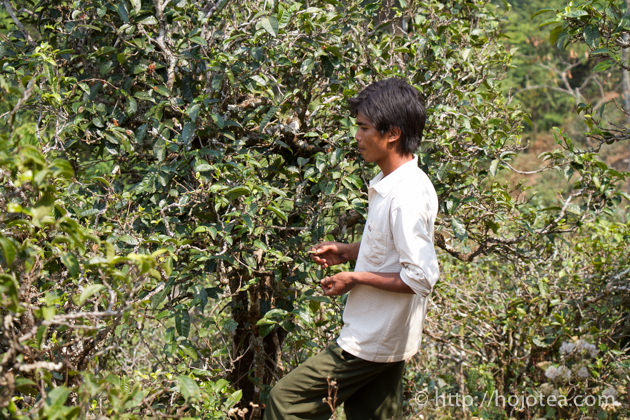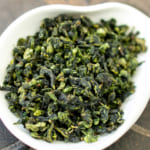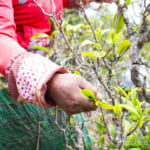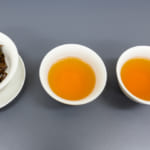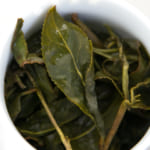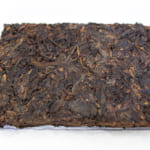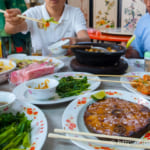- HOME >
- Types of Tea
The Ripe Pu-erh Tea Made of Myanmar tea
- [2017.04.23] Posted By Akira Hojo
In this year, one of the objectives of my Yunnan trip was to look for the quality ripe pu-erh tea. Since the tea season was late, I have more time to look for the manufacturer of ripe pu-erh tea this time. So far we have succeeded to find two types of good ripe pu-erh tea.


The ripe pu-erh tea is made from the raw pu-erh tea
The ripe pu-erh tea is made of the fermentation by microorganism and raw pu-erh tea is used as the raw material. The raw pu-er tea will be piled on the floor and added with some water, mixed well, and then the microorganism fermentation will take place. There are different types of microorganism involve in the fermentation process, e.g., anaerobic bacteria, aerobic bacteria, yeast and mold. They take turn to grow and conduct fermentation. One pile normally consists of several tones of dry tea leaf, and the duration of the whole fermentation process is about one and a half to two months.
Normally during spring time, the manufacturer of ripe pu-erh tea is not conducting the fermentation. They are very busy collecting the raw pu-erh tea. We look for the tea fermented in previous year. As such, we bought 2016 tea.

Myanmar ripe pu-erh tea
One of the teas we bought is the Myanmar Ripe Pu-erh Tea. The raw pu-erh tea was made in the border town of Myanmar called Guo Gan (果敢) and it was brought to Yunnan to conduct fermentation. Right now Guo Gan is suffering the civil war. Due to extremely dangerous situation, the traffic between the borders is strictly controlled. The traffic is only resumed for a short period when fighting ceased. Due to the critical situation in Myanmar, it is getting harder to obtain the material nowadays.

We have visited the village in Guo Gan back in 2013. We drove for nearly three hours from the border of Yunnan to reach the village.
Naturally-farmed tea was used
Generally, the Guo Gan tea gives very bold body, long-lasting aftertaste with thick mouth feel. It is due to the growing condition of tea and the quality of the soil. In Guo Gan, the soil is yellowish and sticky. The soil is extremely rich in iron content.
If we make teapot using their soil, it would produce the great quality clay ware.
In addition, teas in Guo Gan are mostly naturally-farmed. They use no fertilizer and not to mention pesticide. Nevertheless, some teas along the road or passage may be unintentionally fertilized by cattle that are freely running around the village. My ripe pu-erh manufacturer is very particular about the tea growing under the natural environment. They are buying tea from the remote area where tea is free from fertilizer.
Very limited availability of spring tea
The ripe pu-erh tea produced from the first-plucked spring tea is scarcely available in tea market. Once we understand the practice of ripe pu-erh tea manufacturing, we can understand the reason why the spring tea is so limited.
Usually, the ripe pu-erh tea manufacturer conducts the fermentation of ripe pu-erh tea three times in a year: in spring, summer and autumn. In summer, due to the warm weather and raining season, tea grows fastest and thus the quantity of the summer tea is the largest and lowest in cost, and then followed by the autumn tea. On the contrary, the quantity of spring tea is usually very small but outstandingly good quality. Due to the material is very limited, the price of spring tea is high. For example, one of my ripe pu-erh tea manufacturer produces about 200-300 tones of ripe pu-erh tea a year. However, they only have a few tons of spring tea. As the standard practice of the ripe pu-erh tea manufacturer, they blend spring, summer and autumn crop in order to even out the price and quality. This is a very common practice of the ripe pu-erh tea manufacturing. Usually the lesser portion of the ripe pu-erh tea available in the market is made of the three-season blend, while most of the ripe pu-erh tea is made of summer-autumn blend.
However, if you have ever tried the ripe pu-erh tea that is made of the spring crop, you may not be able to come back to the three- or two-season blends. The spring ripe pu-erh tea gives soft mouth feel, strong aftertaste and the sweetness lingers down the throat for a long time. Because of the outstanding quality and cup characteristic, we cannot move away from the spring crop. The latest two types of ripe pu-erh teas are also made of spring tea harvested at the end of March to April.



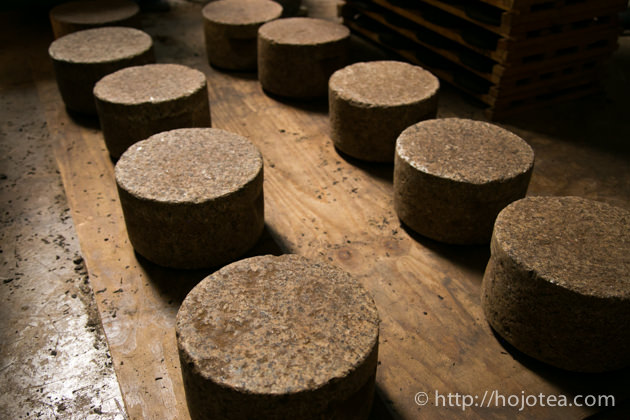
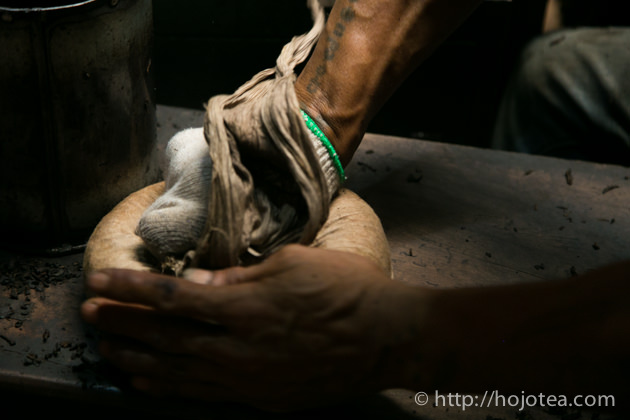
We completed the compression in cake
We have already compressed the ripe pu-erh tea into 357g and reconfirm the quality. Now we are drying the cakes and it may takes about two weeks time for drying.
These teas are arriving at our shop in about one to two months time. I am very excited to introduce these teas.
Related Articles
How to get the latest update on HOJO Tea?
1. Follow Twitter, 2. Click "Like" on Facebook, and 3. Subscribe in newsletter. You can have the latest tea news from HOJO Tea.
 Subscribe the Newsletter to enjoy the privileges
Subscribe the Newsletter to enjoy the privileges- You may receive a free sample upon purchase, or you may have the priority to purchase special products. So please remember to subscribe our newsletter as well as the social network.
- New Release of Anxi Traditional Oolong
- Anxi, located in Fujian province, China, is celebrated for its Tie Guan Yin tea. However, the Traditional Anxi Oolong from this region boasts a unique fruity aroma, distinguishing it from Tie Guan Yin. Anxi: A Renowned Hub for Oolong Tea Production in China Fujian Province, renowned for its rich tea heritage, boasts several prominent tea-producing …
- New Release of Lan Yun Tie Guan Yin from Anxi
- Lan Yun Tie Guan Yin from Anxi, is not just an ordinary Tie Guan Yin. It has a strikingly delightful flavor reminiscent of orchid flowers with silky-soft drinking sensation. Anxi, renowned as one of the three major Oolong tea production regions in China. Anxi is recognized as one of the three major Oolong tea-producing regions …
NEW ARTICLES
 New Release of Anxi Traditional Oolong
New Release of Anxi Traditional Oolong- Anxi, located in Fujian province, China, is celebrated for its Tie Guan Yin tea. However, the Traditional Anxi Oolong from this region boasts a unique fruity aroma, distinguishing it from Tie Guan Yin. Anxi: A Renowned Hub for Oolong Tea Production in China Fujian Province, renowned for its rich tea heritage, boasts several prominent tea-producing …
 Yunnan 2024 Spring Tea Sourcing
Yunnan 2024 Spring Tea Sourcing- Yunnan Province is globally renowned for the exceptional quality of its tea leaves. However, lax production management often presents challenges in achieving the desired tea quality when relying solely on pre-made teas. To address this issue, we have committed to remaining on-site throughout the spring season to closely monitor tea production. We are meticulously inspecting …
 The Relationship Between Greenness of Tea Leaves and Fertilizer
The Relationship Between Greenness of Tea Leaves and Fertilizer- For both tea and vegetables, there’s a common misconception that a deeper green colour indicates better quality and greater health benefits. However, this isn’t always the case. Natural plants often have a yellowish-green hue rather than a vibrant green. If you observe wild plants in grasslands or along roadsides during spring, you’ll notice that they …
 Creating Muscatel Black Tea Using a Unique Blending Method
Creating Muscatel Black Tea Using a Unique Blending Method- I would like to introduce the unique creation of black tea with a distinctive muscatel flavor profile. Acquiring Exceptional Mi Xiang Black Tea Have you ever heard of a unique black tea called “Mi Xiang Black Tea” or “Muscatel Black Tea”? This tea is crafted from leaves that have been delicately nibbled by leafhoppers, resulting …
 New Release of Lan Yun Tie Guan Yin from Anxi
New Release of Lan Yun Tie Guan Yin from Anxi- Lan Yun Tie Guan Yin from Anxi, is not just an ordinary Tie Guan Yin. It has a strikingly delightful flavor reminiscent of orchid flowers with silky-soft drinking sensation. Anxi, renowned as one of the three major Oolong tea production regions in China. Anxi is recognized as one of the three major Oolong tea-producing regions …
 The Difference Between Fermentation in Tea and Fermented Foods
The Difference Between Fermentation in Tea and Fermented Foods- Black tea and oolong tea are often categorized as “fermented teas,” but the extent to which they undergo fermentation raises questions about whether they truly qualify as fermented foods. In this article, I endeavour to offer a thorough exploration of the distinctions between tea and traditional fermented foods, shedding light on the nuances of their …
 Easy Way to Prepare Flavorful and Warm Tea at the Workplace
Easy Way to Prepare Flavorful and Warm Tea at the Workplace- Have you ever experienced the transformation of tea stored in a thermos or water bottle at work, turning into a brown hue and acquiring a bitter, astringent taste? As this has piqued the interest of many, I would like to offer a more in-depth explanation for a solution. Tea stored in a thermos undergoes oxidation …
 The new release of Bao Dao Shan Da Cha Tou Brick 2017, exclusively crafted from Da Cha Tou leaves
The new release of Bao Dao Shan Da Cha Tou Brick 2017, exclusively crafted from Da Cha Tou leaves- Bao Dao Shan Cha Tou Zhuan 2017 is a ripe pu-erh tea crafted into brick form. Bao Dao Shan is the name of the mountain situated in the southwestern part of Yunnan. “Cha Tou” denotes a distinctive type of ripe pu-erh tea. In the course of fermenting spring tea, certain tea clumps naturally develop, known …
 We released Lapsang Suchong Qi Zhong Classic: Premium Lapsang Souchong
We released Lapsang Suchong Qi Zhong Classic: Premium Lapsang Souchong- Lapsang Souchong is one of the earliest known black teas distinguished by a unique production method and flavour profile. Its origins are often linked to the Wuyi Mountains in China’s Fujian province, where Lapsang Souchong is traditionally crafted. Black tea production in the Wuyi region has a history dating back several centuries. Lapsang Souchong tea …
 Regular Consumption of Umami Seasoning Can Influence Taste Preferences
Regular Consumption of Umami Seasoning Can Influence Taste Preferences- Excessive consumption of artificial condiments, such as umami seasonings, is believed to influence one’s taste and preferences. I’d like to share my own view to explore how an overabundance of condiments can indeed influence one’s palate. Umami Seasonings Are Prevalent in Asian Countries I spend half of the year living abroad, particularly in China and …
Shop Info

Address:Lot No. T-215, 3rd Floor, The Gardens Mall, Mid Valley City, Lingkaran Syed Putra, 59200 Kuala Lumpur
Tel: +603-2287-4537
Business Hour: 10am to 10pm
Category
- New Arrival at HOJO Online Shop
- Featured Articles
- Newsletter
- Types of Tea
- Origin of Tea
- Teapot and Tea Equipment
- Tea Column
- How to enjoy tea
- Tea Processing
- How to choose quality tea
- Tea constituents and functional effect
- Safety of Tea
- Foods
- Tea Business Operation
- Hobby and Outdoor Activity
- Ranking of Tea
- Video
- FAQ
- Media Release
Profile

- AKIRA HOJO
- I invite you to experience my tea selections.I was born in Nagano, Japan. In university, I studied agricultural chemistry, and I have the master degree in food science. I worked in Japanese food industry for 10 years. I involved in R&D, QC and QA. As a factory manager, I implemented ISO9000 series and managed the factory.
- The Art of Tea Magazine
- We posted the article on “The Art of Tea Magazine No.9, the magazine is published in Taiwan. We featured some scientific view about the tetsubin
- New Straits Times
- The Malaysian National Newspaper, New Straits Times featured HOJO Tea on 17-Oct-2007.


